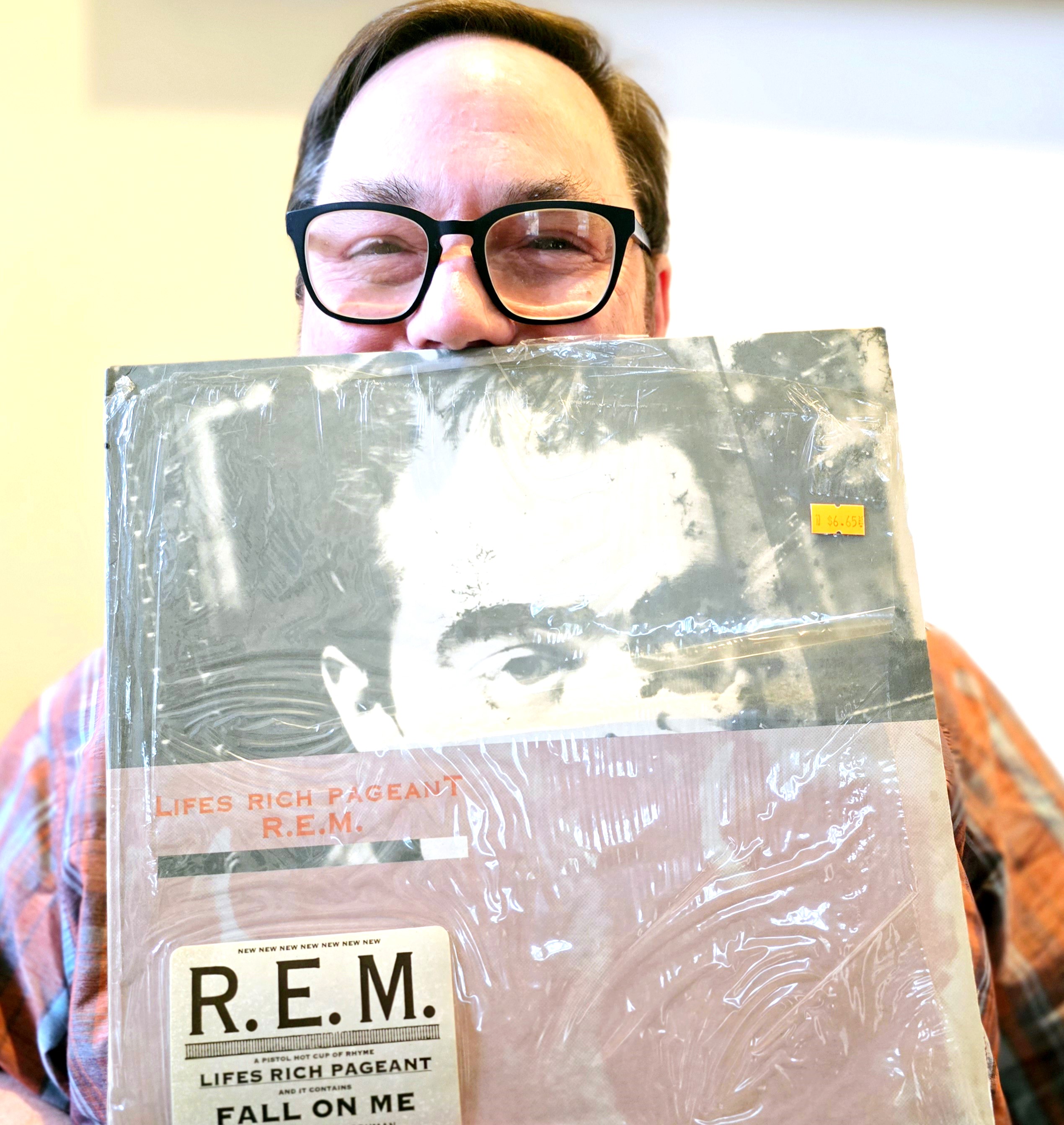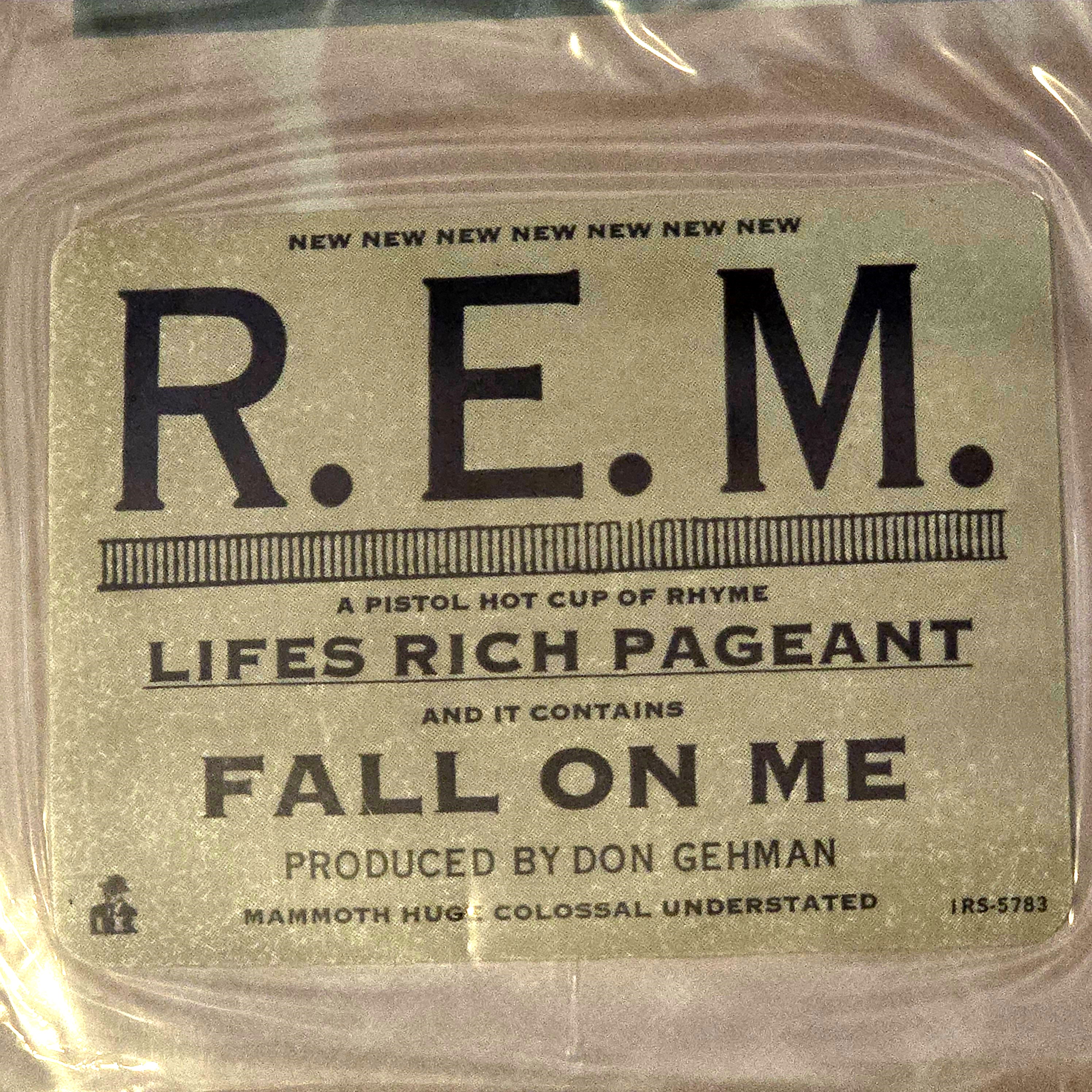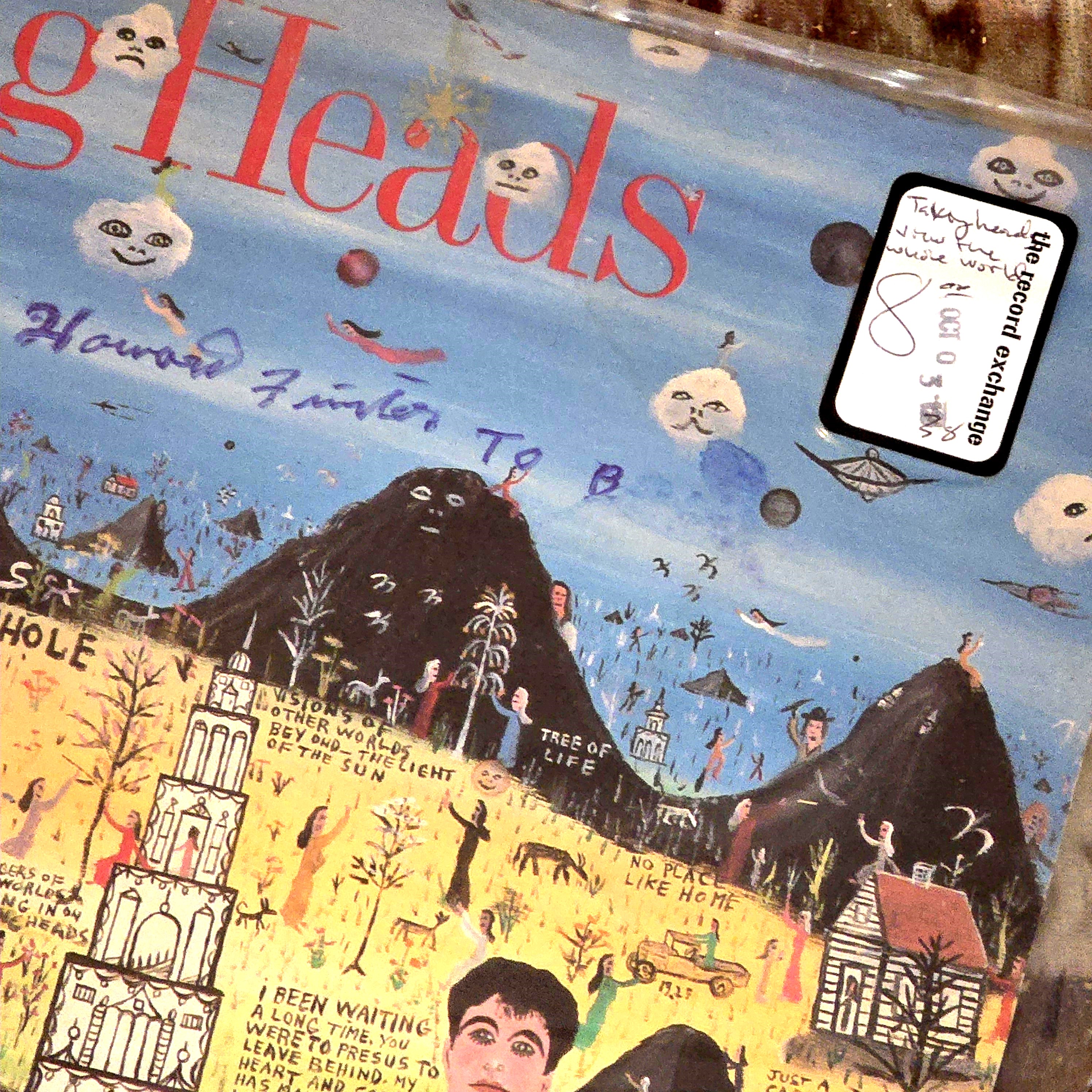
Letter From the Publisher
Published on Nov 29, 2025
Giving Thanks
Published on Nov 27, 2025
Garfield, Odie, and the Dead Vinyl Years
Published on Nov 4, 2025
How Doo Wop Saved Me
Published on Nov 2, 2025
More Liner Notes…
Featured Essay: Mystique and Deceit in R.E.M. Album Art
by Kevin Ruppenthal

The first time I heard R.E.M. was when my cousin Jeff played me his copy of “Murmur” sometime in Charlotte back in 1983. We did not see each other much growing up, but – despite being cousins – he was essentially my “older brother” back then: the cool older brother who had all the great records. Probably with no small input from his actual older brothers I suppose. “Radio Free Europe” transfixed me with the first listen, from the initial effects and opening snare cracks to the thump-thump-thump-chiiiiime ending. Had to have it.
Back home in Pennsylvania, the next trip to the record store sent me straight to the “R” bin: did they have any other records? “Murmur” was already acquired, but the bin also held a blue-covered EP titled “chronic town.” Yes, I’ll have that one too.
In the 1980s, achieving portability for your music was led by taping your vinyl onto cassettes. The “chronic town” vinyl sides aren’t labeled properly at all, only indicating “poster torn” and “chronic town,” unless you really dug into the numbers on the labels or in the deadwax nearby (something I learned to do decades later). According to the back of the “chronic town” sleeve, “1,000,000” was the opening track, and it went onto my C90 Maxell thusly. Think about it: a new band just launching their career, coming out on their first 12” release crowing, “I could live a million years!” Makes a lot of sense, kinda gutsy. This tracklisting builds up to the closer, “Carnival of Sorts (Box Cars),” abandoning you by the tracks as the carnival train veers into the darkness ahead of the coming dawn.
I had no idea how wrong this running order was.
April 1984 brought the second album, and I didn’t know what to make of the “Reckoning” sleeve at first. Some kind of Ouroboros snake painting, marvelous and murky, faces painted in the negative space of the square canvas. The song titles are mixed into the cover artwork, with some differences. The labels had strange capitalization in abundance: “camerA” and “(don’t Go back TO) ROCKVILLE” as examples. The titles listed on the sleeve didn’t quite exactly match the labels either: “second GuessinG” is listed as “2nd guessing” on the cover. Parentheticals are missing in the cover painting: “(annELISE)” is not showing from “Time After Time” and “(don’t Go back TO)” isn’t in “ROCKVILLE” either. Eventually we learned that the cover painting was done by Georgia artist Howard Finster, in whose Paradise Garden the “Radio Free Europe” video had been filmed.

“Reckoning” labels had no A/B or sides 1/2 indicated … how do you tell which side to start with? Well… second album… one of these sides starts off with “second GuessinG” – that’s clearly the leadoff track! In this play order, “Little America” closes side 1. “So. Central Rain” is buried deep into side 2 (eight tracks into the LP*), that seems weird. The elegiac “Time After Time (annELISE)” is a perfect closing track for sure, though. Another clue had been missed by me again this time, though: the sides are labeled. They’re labeled L/R or “Left” and “Right”: The album should begin with “Harborc0at,” with the lead single of “so. Central Rain” coming in much earlier at track 3. The album spine carries the notion “File Under Water,” a ruse that would continue with “Document” (File Under Fire), and the “Eponymous” collection (Grain). Even the inner sleeve has a tracklist that’s completely incorrect in its running order.
At this point, my homemade cassettes for “chronic town” and “Reckoning” were both completely backwards in their side orders. They’d stay that way for years.
Artwork for their third album, “Fables of the Reconstruction,” baffled people even to what the title was: “Reconstruction of the Fables”? “Fables of the Reconstruction of the Fables”?
By 1986, we’d gotten a CD player, so “Lifes Rich Pageant” was their first new release I got in that format. No confusion whatsoever on the sides this time. They’re labeled Dinner/Supper, and there’s no apostrophe in the album title, like the documentary “Dont Look Back.” However… the tracklist on the back cover of “Lifes Rich Pageant”** (both LP and CD) is wildly incorrect, omitting entire songs, causing me to retype it out and stick it into the case.
April 1987 saw the “Dead Letter Office” (sides: Post/Script) compilation released, and as a bonus, “chronic town” was appended for its first compact disc appearance. “Wolves, Lower” somehow is the first track, though. Wait.. that’s… backwards… the “chronic town” sides are on the CD in the wrong order! The CD booklet includes a miniature version of the “chronic town” vinyl sleeve (front and back) – so… why are the songs in the wrong order on the disc? What a debacle! Answer after many years: they’re not. The “chronic town” cover tracklist has just always been willfully incorrect.
The best guess I can find online is that the “chronic town” running order makes a lovely triangle or pyramid shape when listed with the sides reversed. If you lived through the transition from analog to digital music, traded your tapes and records in for CDs, you know that compact discs did take away as much as they delivered. Beyond life’s surface noise, the packaging element that drew you into the artist’s world, domain, and influences was lost when albums went by the wayside. Gone were the triple gatefolds, posters, stickers, and liner notes, along with so much artwork.
Such was the magic of finding music before the internet. Anything could be a mystery, down to punctuation, capitalization, even the labeling of the sides. My friend Christina and I used to write all those lyric fragments from the “Lifes Rich Pageant” back cover (“Bury magnets,” “She will make a beautiful fossil,” et. al.) all over our school books, a secret code shared only by us and our friends.

The ”Reckoning” CD later corrected my side-swapping with that one. How weird it should happen to me twice with the same band? If CDs had never come out, I wonder how many more backwards tapes would be in my collection today – sides incorrectly deciphered, recorded for the car or Walkman, the flow of the album completely upended from the band’s intentions.
CODA: A good number of years later, circa 2012, my now-spouse made the pilgrimage (pun intended) with me to Athens, Georgia. We found the church steeple where they first played, saw the train trestle from the back cover of “Murmur,” shopped at Wuxtry Records, and ate at Weaver D’s. The internet even helped us find the kudzu from the front cover of “Murmur” – it’s still there, or at least it was then. We visited Howard Finster’s Paradise Garden. He had departed this earth by then, but a nearby gallery exhibiting more of his work was selling LPs and singles with Finster’s signature – for hundreds of dollars. The trip had already been long and expensive, so I didn’t buy any of those 45s or LPs.
A year later, in a local new arrivals bin, I spotted another record wrapped in Finster’s artwork: “Little Creatures” by Talking Heads. It was priced at eight bucks, but there was a signature on the sleeve. That signature was Howard Finster’s, which I was now well-acquainted with. Take another look at albums in used stores with names written on the sleeve. Those people cared for their records and wanted them back home safely. They’re probably in pretty good shape.
Footnotes:
*Years later I’d read a piece in which Bob Mould (at the time in SUGAR) said he likes to put the leadoff single 3-4 tracks into a record to keep people’s attention. Makes a lot of sense!
**My main mystery with “Lifes Rich Pageant” would be the shocking revelation decades later that my name, “Kevin,” appears in the lyrics for “Just A Touch”: “Kevin heard it on the radio.” This surprise knowledge is thanks to the demo version in the 2011 deluxe edition having much clearer vocals.
Bio:
Kevin Ruppenthal is a musicphile and vinyl collector who’s sick of rebuilding his iTunes library when it inevitably corrupts. From an early age he has loved to watch records spinning around, even if only on dresser drawer knobs due to limited access to the family turntable. He is thankful for his mom’s love of music, and that she’d always float him the 12 cents of sales tax so he could buy two 45s with his $2 allowance each week. He only recently learned he grew up an hour from the McIntosh factory and that his first name appears in a song on his favorite R.E.M. album.
I Have That on Vinyl is a reader supported publication. If you enjoy what’s going on here please consider donating to the site’s writer fund: venmo // paypal

